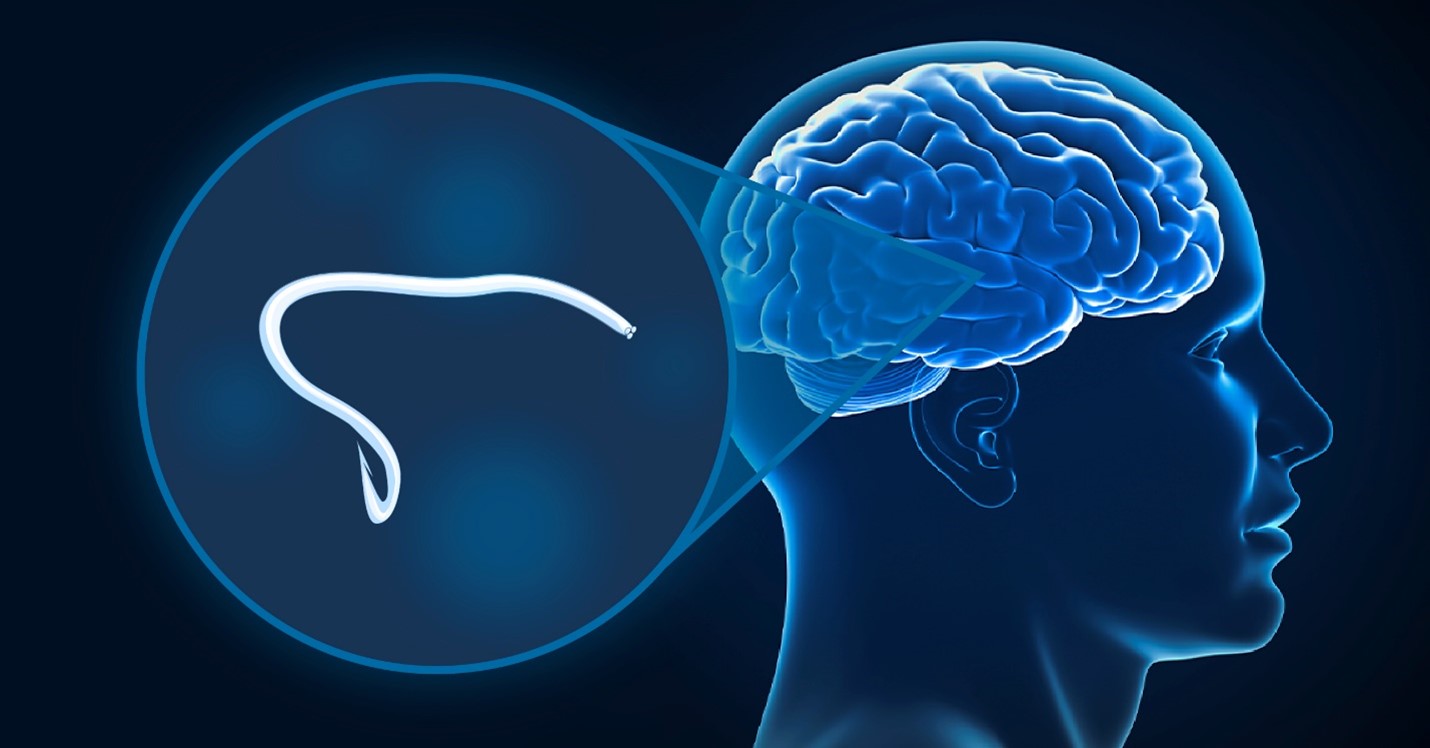
File this under “only in Australia”.
According to an article from the NY Post, a surgical team extracted a 3-inch-long, bright red, wriggling, parasitic roundworm known as Ophidascaris robertsi, normally found in carpet pythons, from the brain of a 64-year-old Australian woman—call her Eve 2.0 because she ate, not an apple, but “edible grasses known as New Zealand spinach” contaminated with python feces.

Crikey! Blimey! Or, better yet, holy sh*t!
For us, as longtime medical professionals, we thought we’d mostly heard, seen, and done it all.
Guess not.
Because this takes the cake. Or should we say, the snake.
Ophidascaris robertsi, a python parasite, has never been seen in humans before until now.
Chronic neurological symptoms prompted an MRI of the woman’s brain, which led to the surgery, and the extraction of a live worm. These symptoms included “forgetfulness and depression”.
Ya think?
We use the occasion of this story as an opportunity to shine a spotlight on 5 neglected parasitic diseases closer to home in the United States. These include Chagas disease, neurocysticercosis, toxocariasis, toxoplasmosis, and trichomoniasis.
- Chagas disease is caused by the parasite, Trypanosoma cruzi. Transmission to humans occurs from exposure to the feces of the insect known as the kissing bug, shown below.

20-30% of those infected develop heart disease and heart failure, which may lead to sudden cardiac death. The CDC estimates that in the United States the prevalence of Chagas disease is at least 300,000 cases, mostly among Latin American immigrants, and that more than 300 infected babies are born every year here with it. Treatment of Chagas Disease is with the more than 50 years old anti-parasitic medications, benznidazole or nifurtimox. These medications are only recommended for the acute phase of the disease.
2. Neurocysticercosis, the single most common infectious cause of seizures in some areas of the United States, is caused by CNS infection with the pork tapeworm, Taenia solium. Consumption of undercooked, infected pork is the major risk factor. Neurocysticercosis mainly affects immigrants from Latin America. Treatment varies with the clinical presentation and may include surgery, the antiparasitics, albendazole or praziquantel, corticosteroids, and antiseizure medications.
3. Toxocariasis is a parasitic infection of cats and dogs. Two species of parasite affect humans, Toxocara canis and Toxocara cati. Children are more prone to infection through accidental ingestion of Toxocara eggs that contaminate sandboxes, city parks, and public beaches, etc. Infections of the eye are a major cause of blindness. Approximately 100,000 cases are diagnosed yearly, although the actual number of cases is reported to be even higher. The antiparasitic agent, albendazole, is the treatment of choice for toxocariasis.
4. Toxoplasmosis is a leading cause of foodborne illness and death caused by the parasite, Toxoplasma gondii. Most infections in humans are asymptomatic. However, significant disease may manifest in infants as birth defects and in immunocompromised individuals. Transmission of infection often occurs through ingestion of improperly cooked/raw meat, and contaminated water. Transmission from mother to baby and through organ transplantation is also possible. Treatment is indicated in all immunocompromised patients as well as immunocompetent patients with severe symptoms. The combination of pyrimethamine and sulfadiazine is the treatment of choice.
5. Trichomoniasis is the most common, non-virally sexually transmitted infection in the world caused by the parasite Trichomonas vaginalis. The CDC estimates that 3.7 million in the United States are affected.
Of concern is that trichomoniasis (trich for short) increases the risk of transmission of human immunodeficiency virus (HIV) in both women and men. It is also a cause of preterm labor in women and low birthweight in babies.
While men are typically asymptomatic, symptoms in women include a foul-smelling yellow or green vaginal discharge, genital itching, and painful urination. Diagnosis is made from clinical presentation alone and/or analysis of vaginal specimens and urine. Treatment is typically with the antibiotic, Flagyl (metronidazole).
In summary, here are six general recommendations to reduce the risk of parasitic infections and sexually transmitted diseases:
- Steer clear of kissing bugs;
- Avoid raw or undercooked meat and contaminated water;
- Wash hands and surfaces carefully after contact with raw meat, poultry, seafood, or unwashed fruits or vegetables;
- Teach children that it is dangerous to eat soil or dirt;
- Use condoms to lower the risk of sexually transmitted diseases;
- Lastly, inspired by the cautionary tale of Eve 2.0, do not touch, or eat edible grasses that are potentially contaminated with python fecal matter. This is the new forbidden “fruit”. Australians and Floridians please take note.
